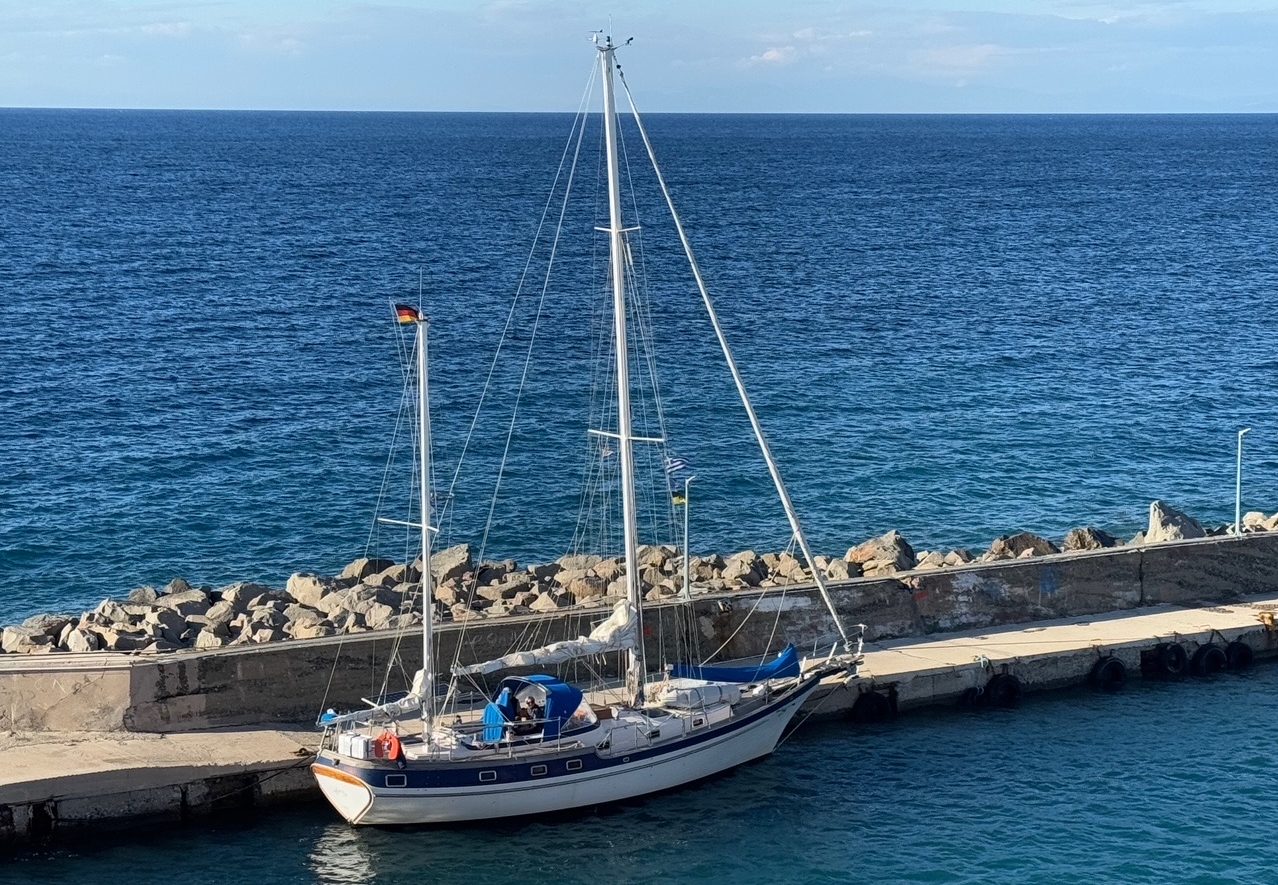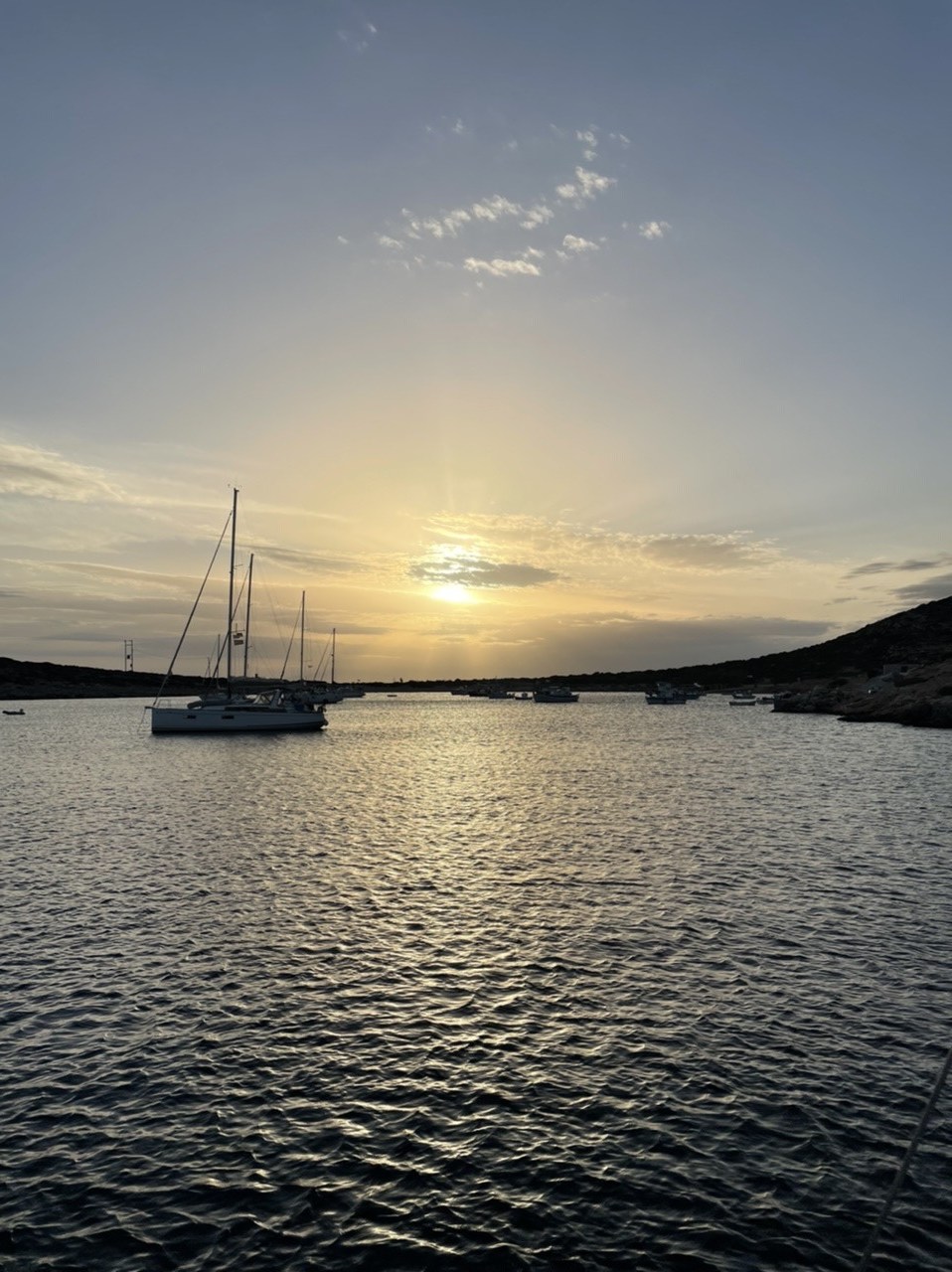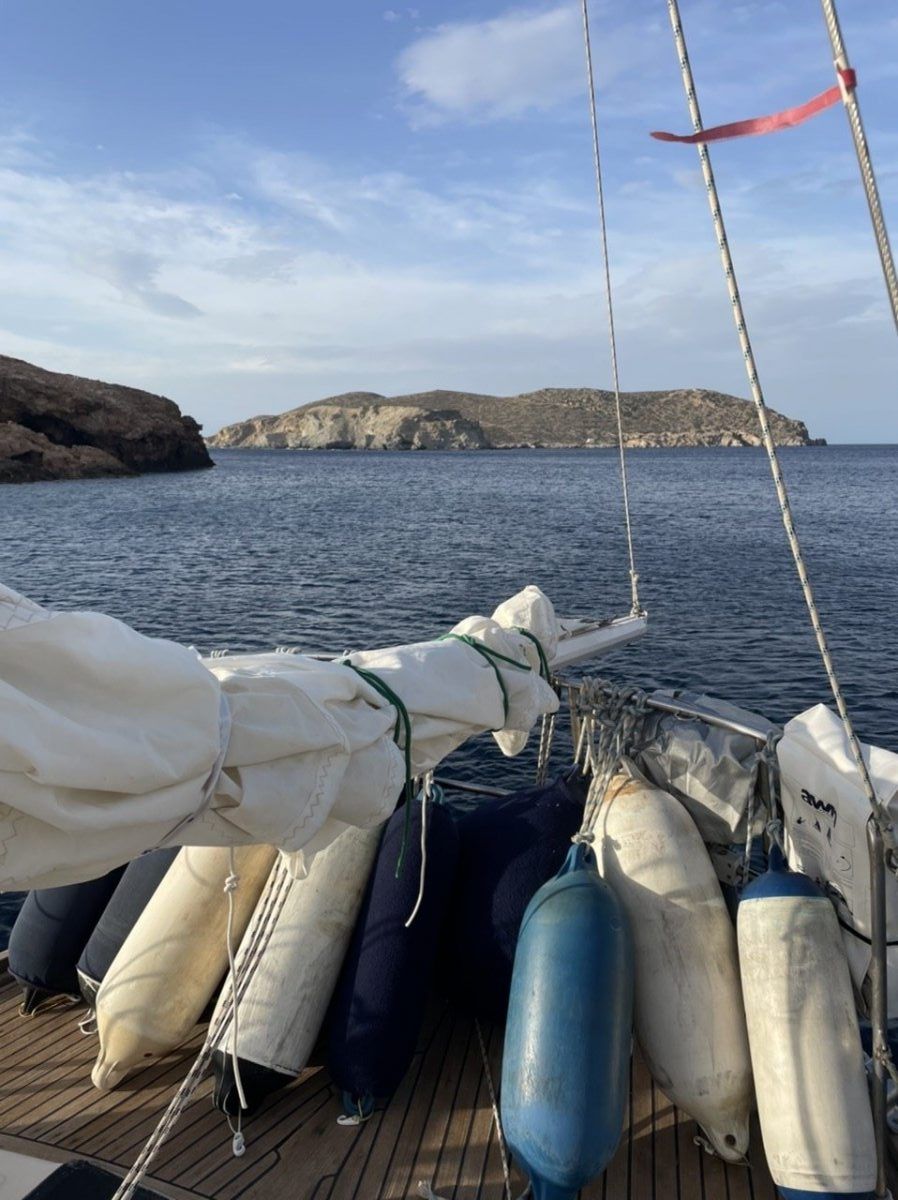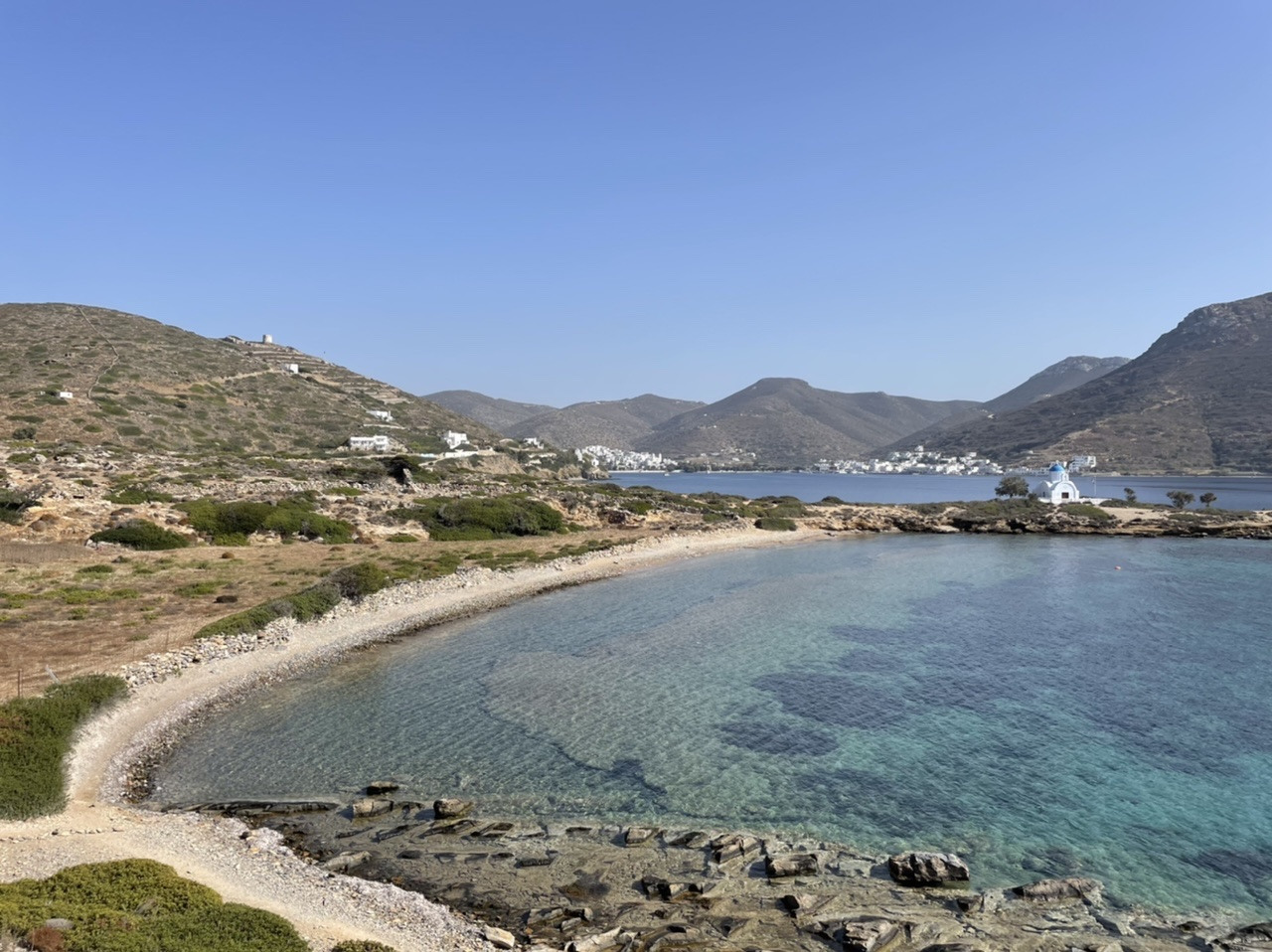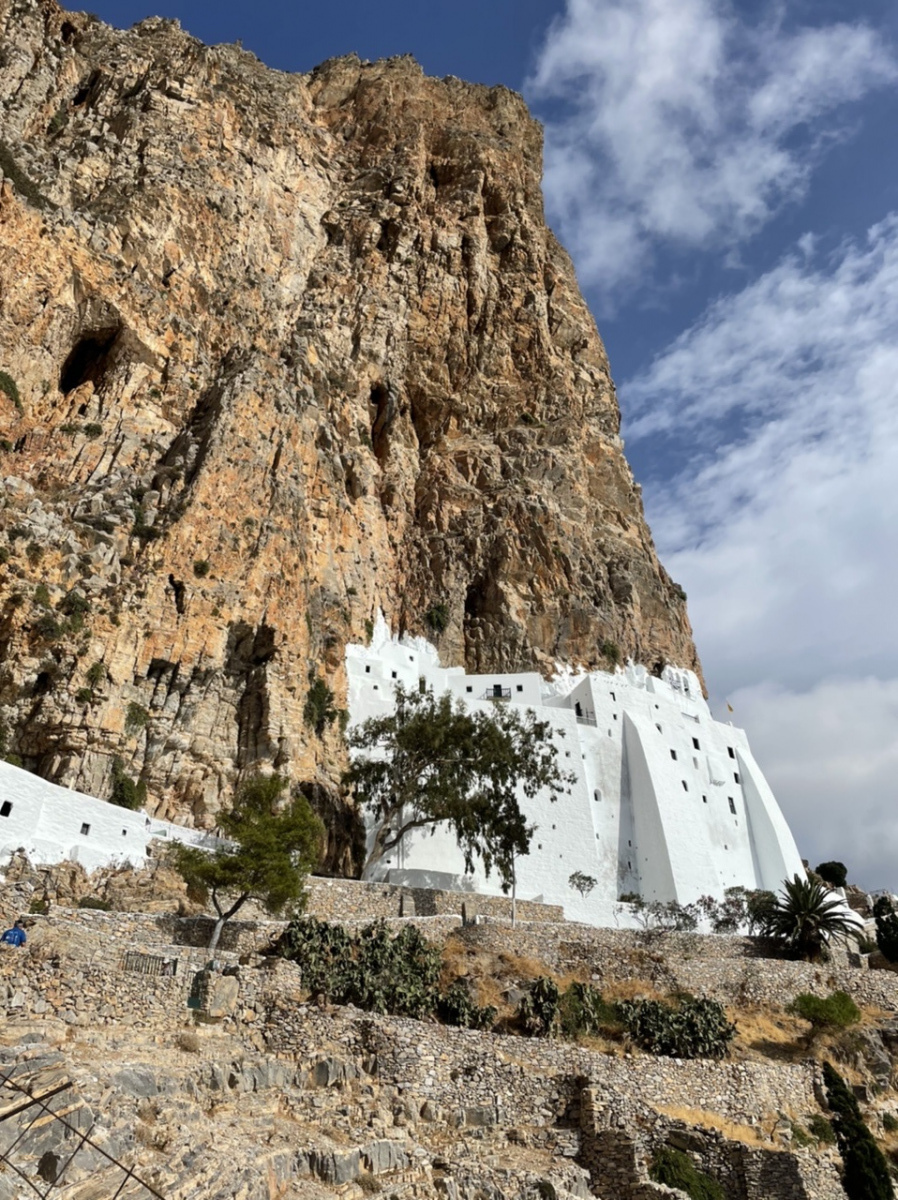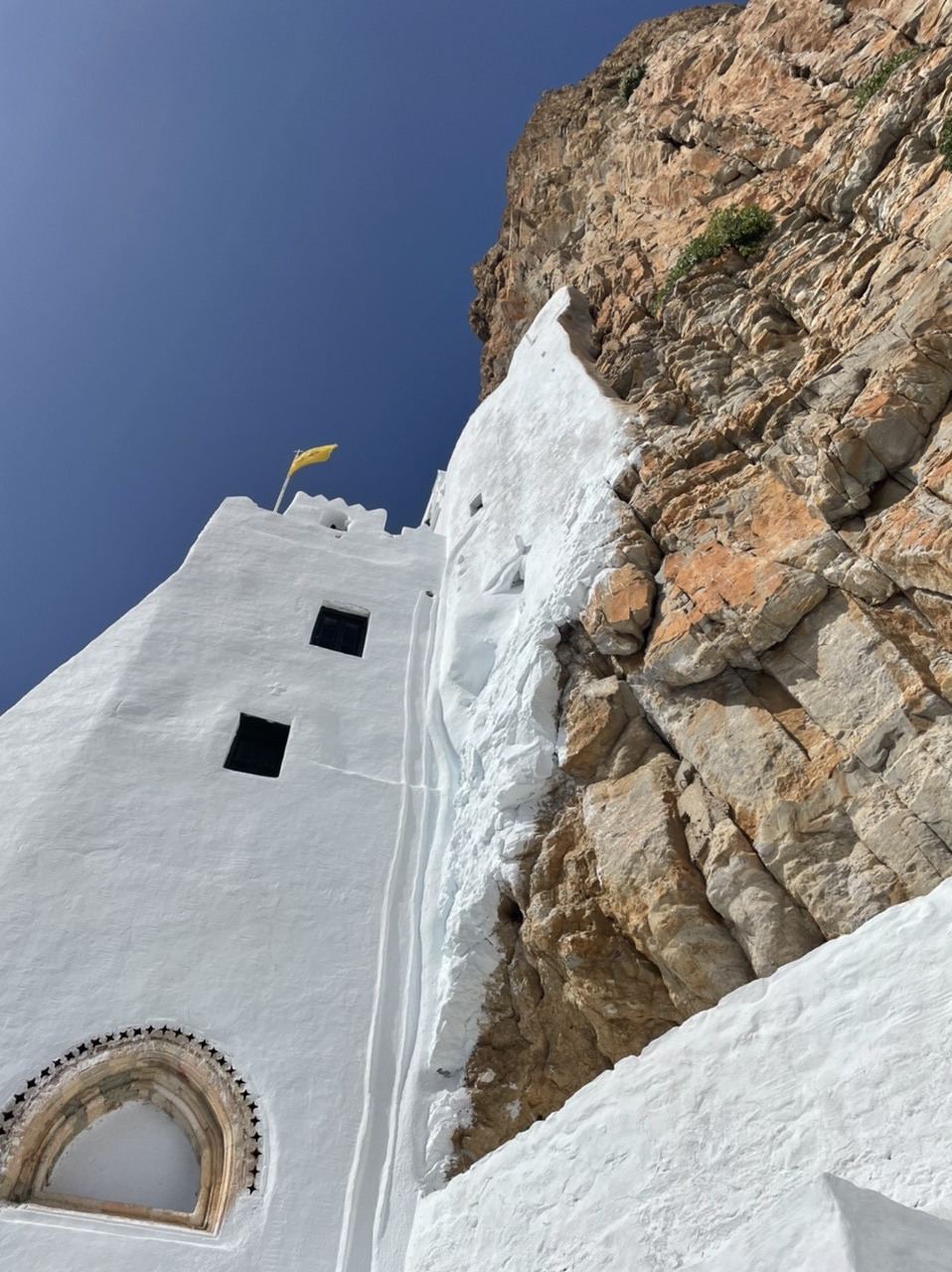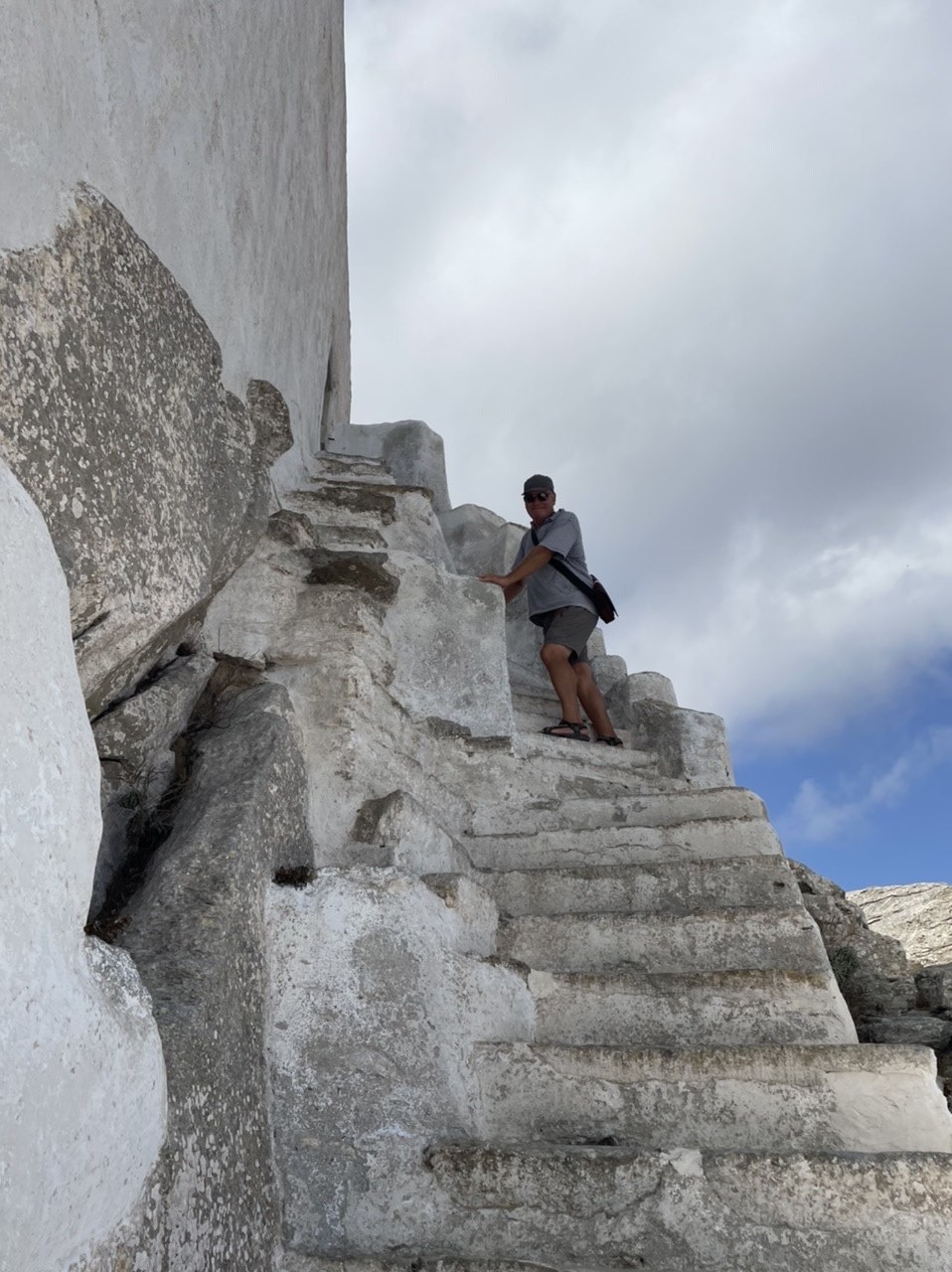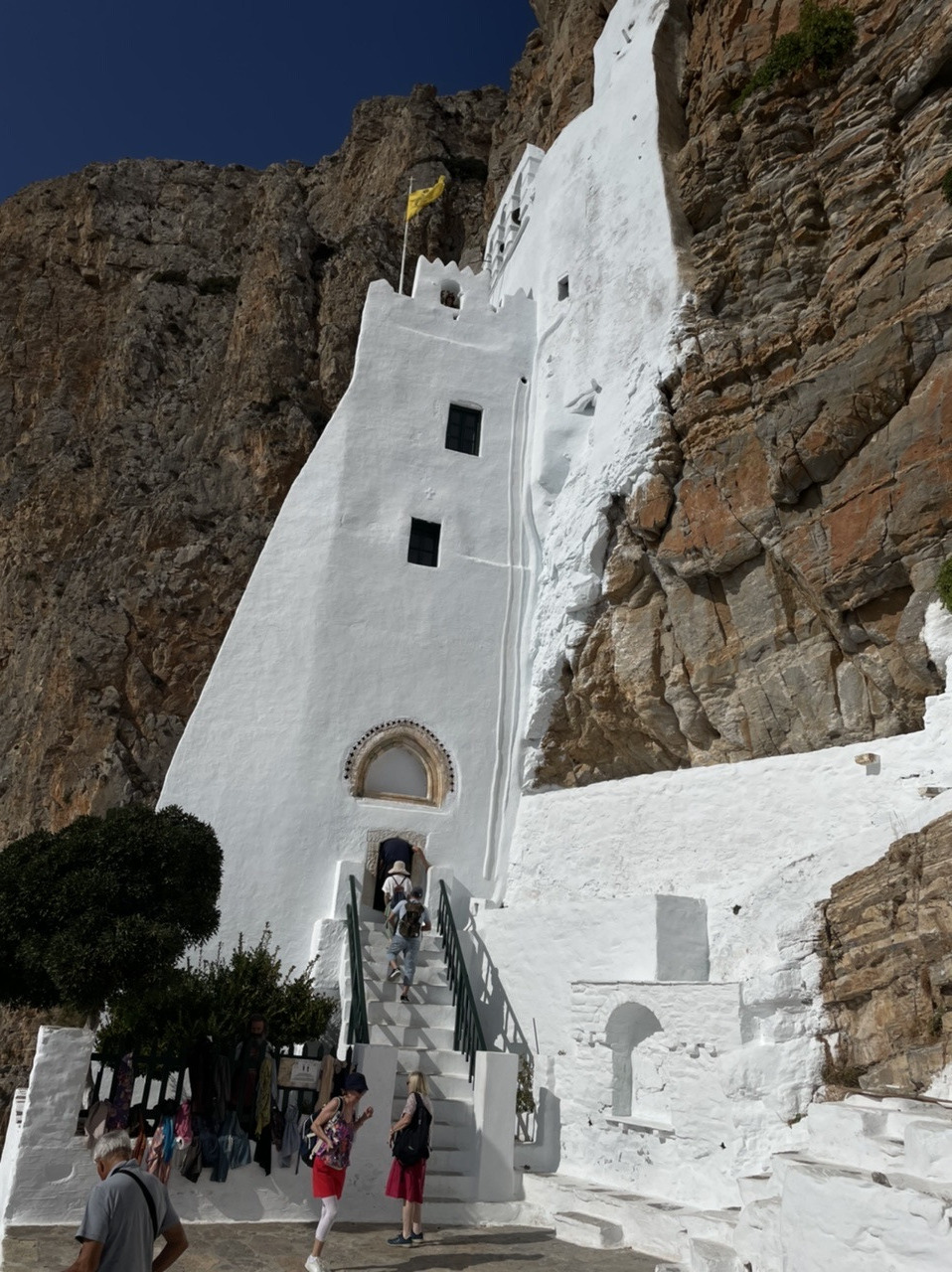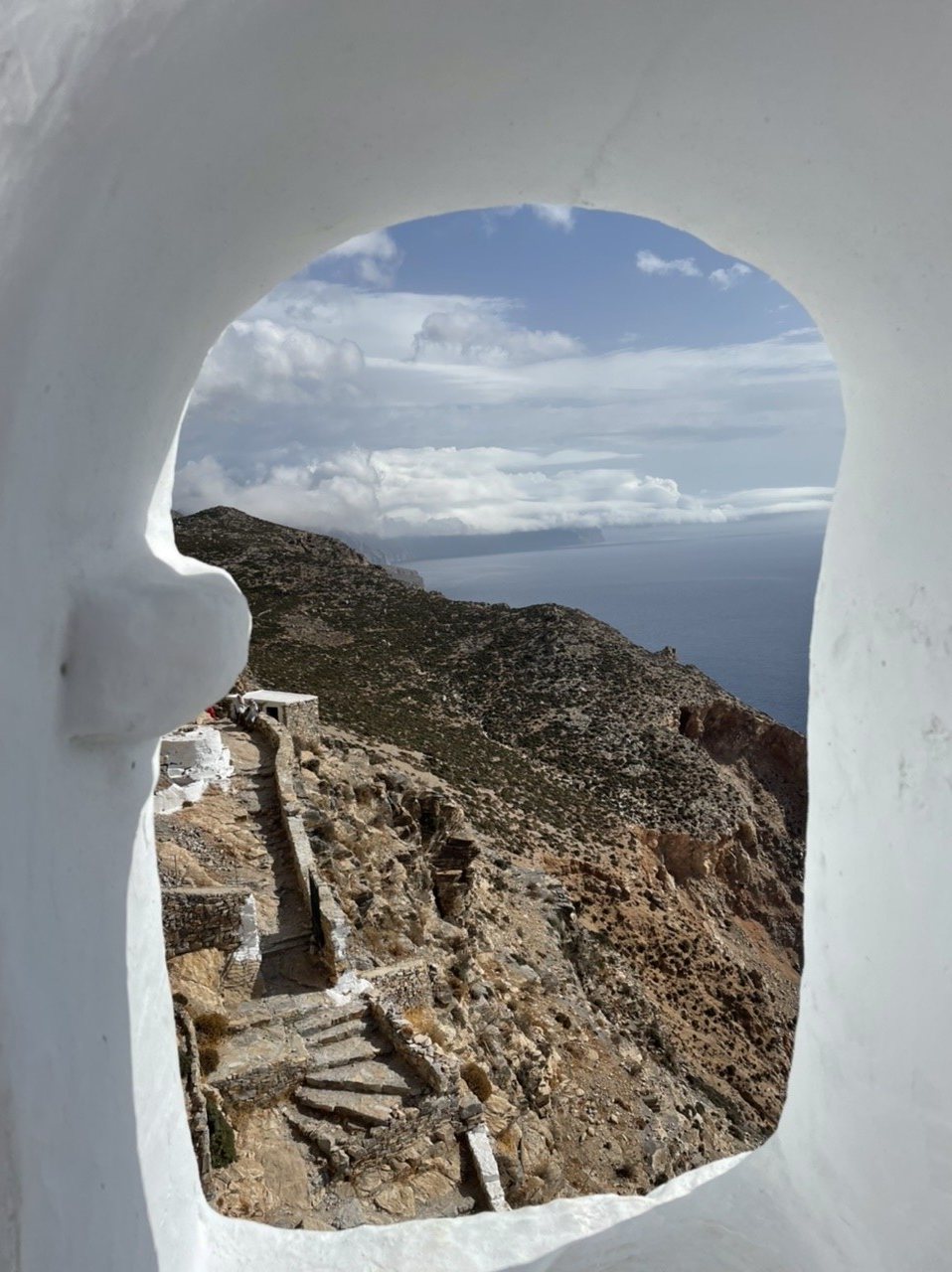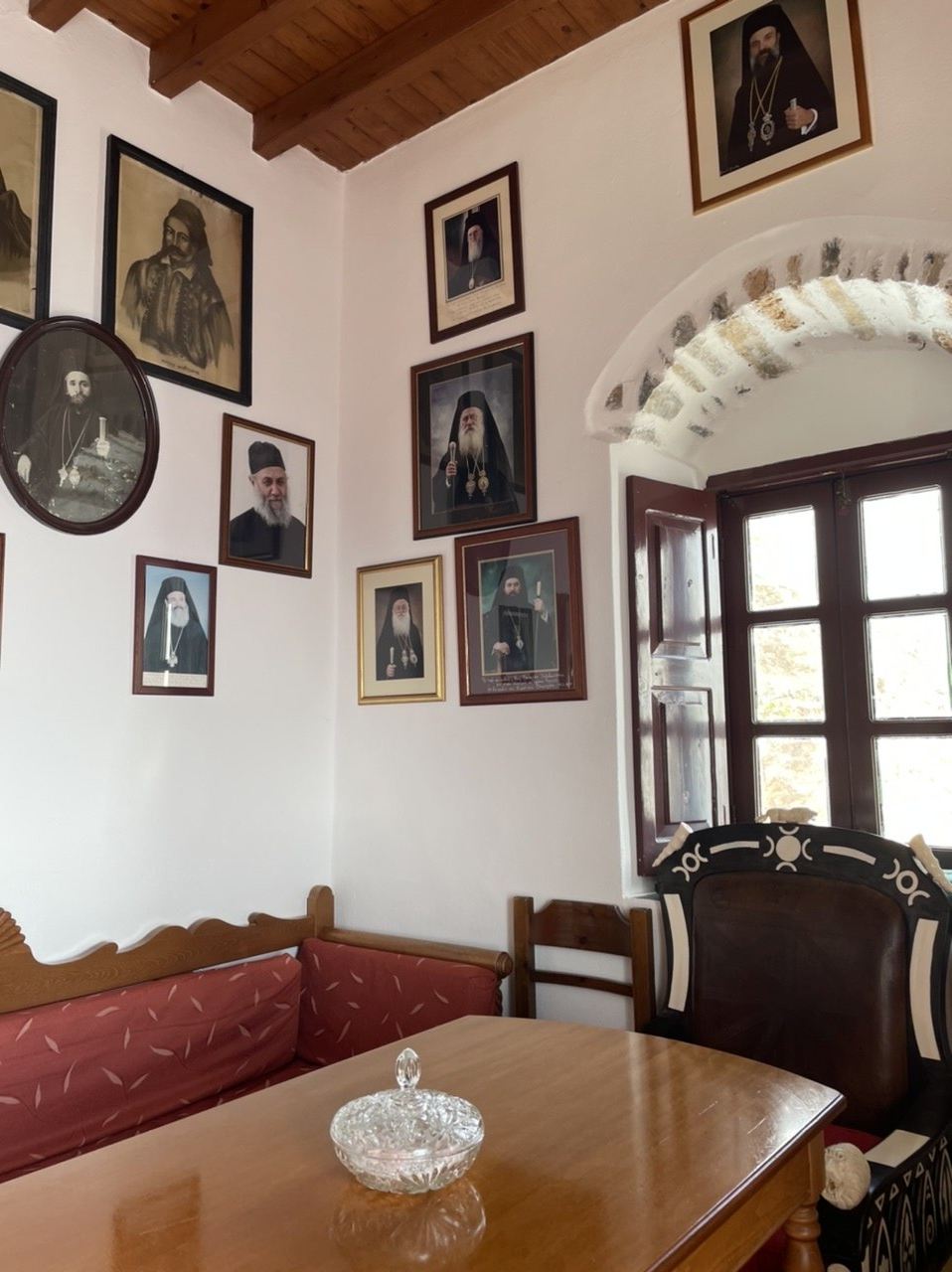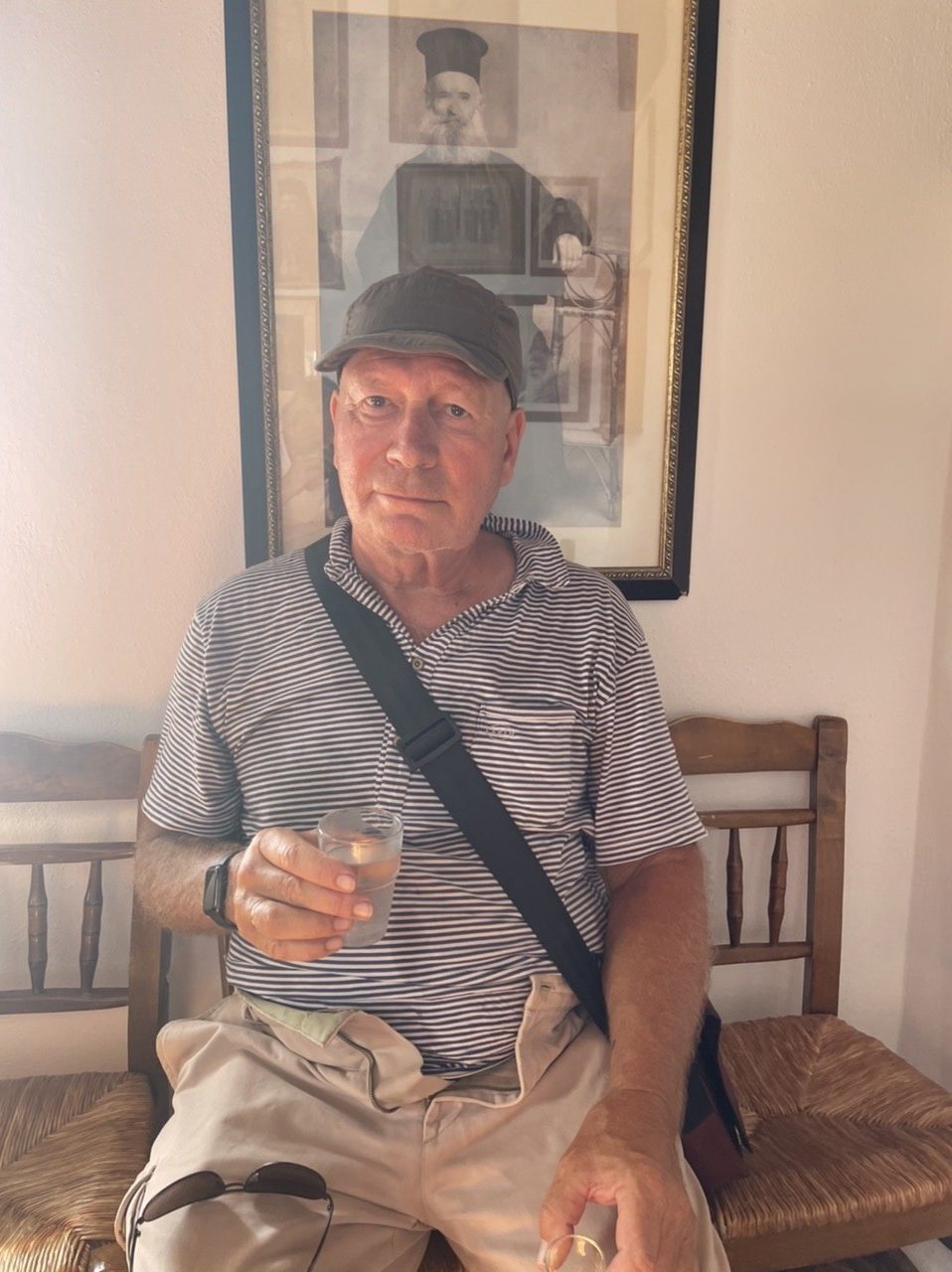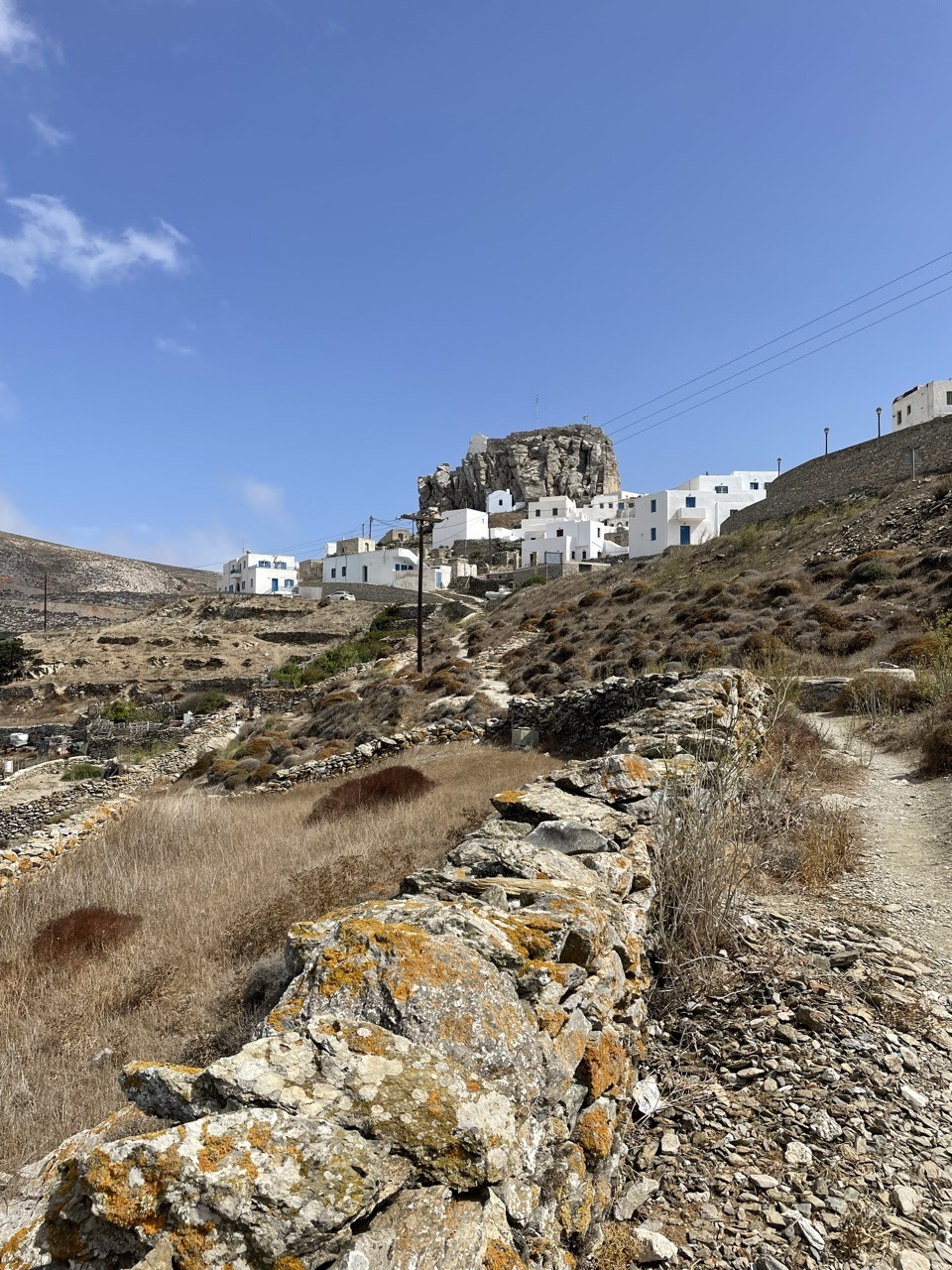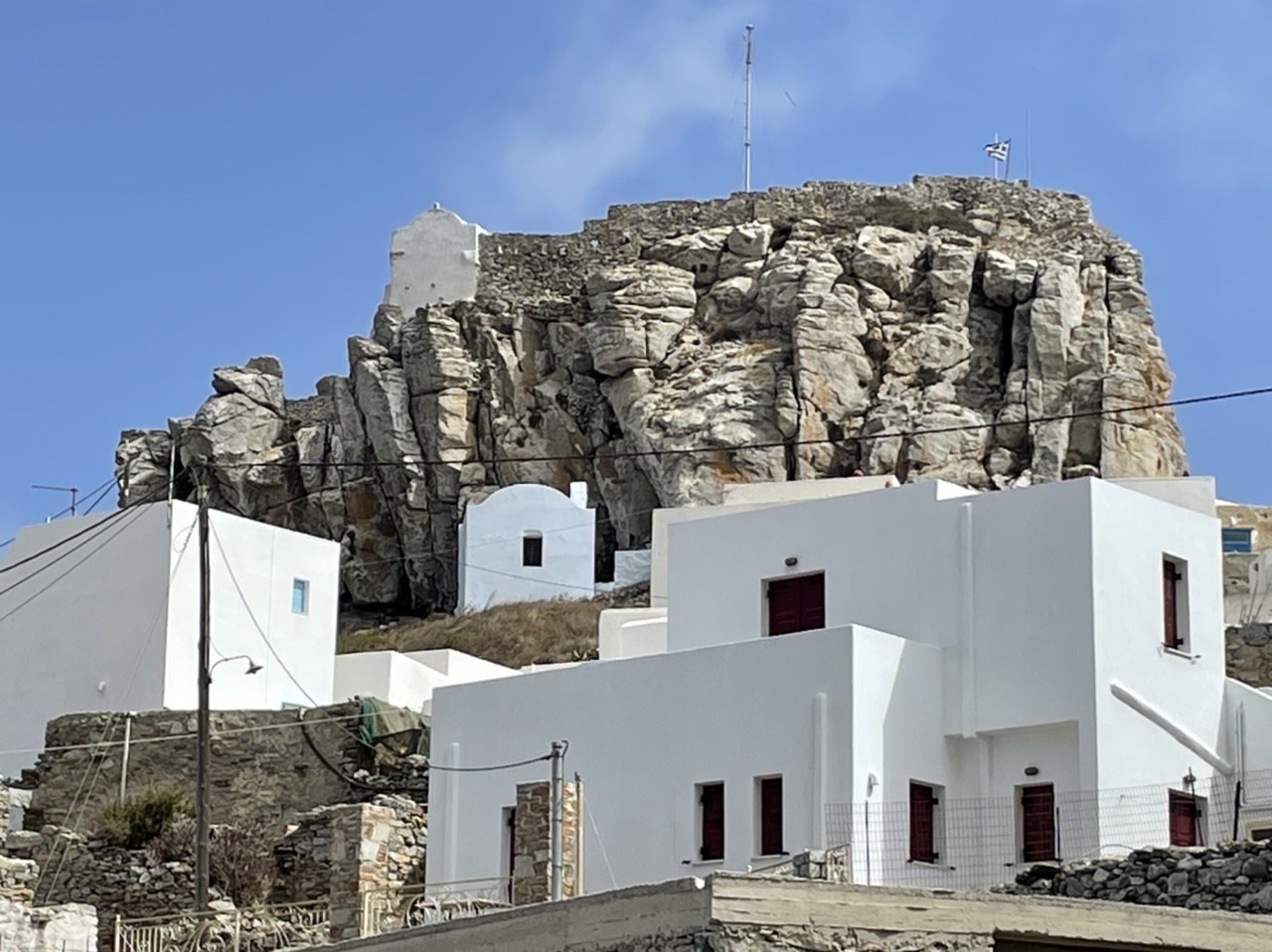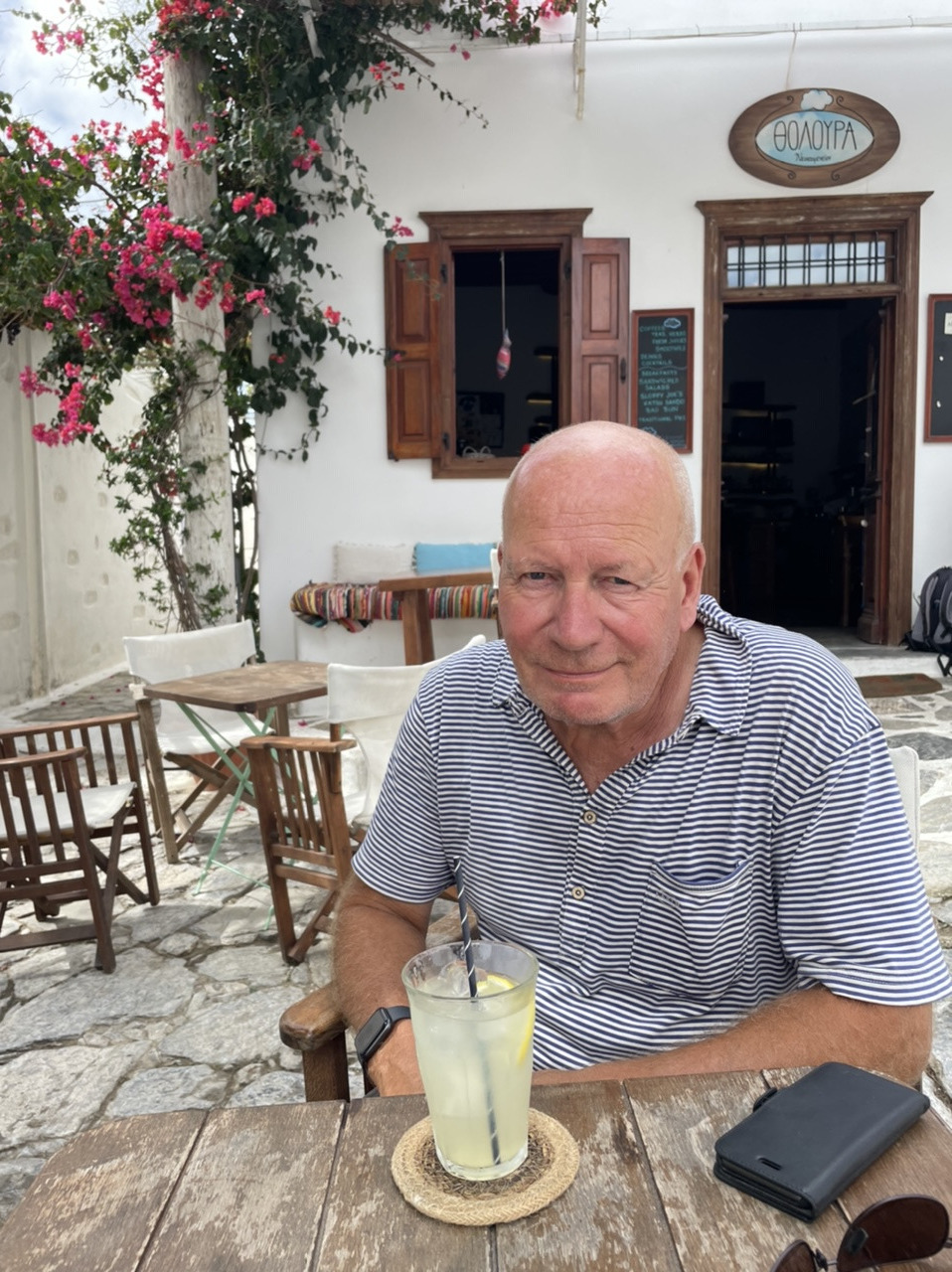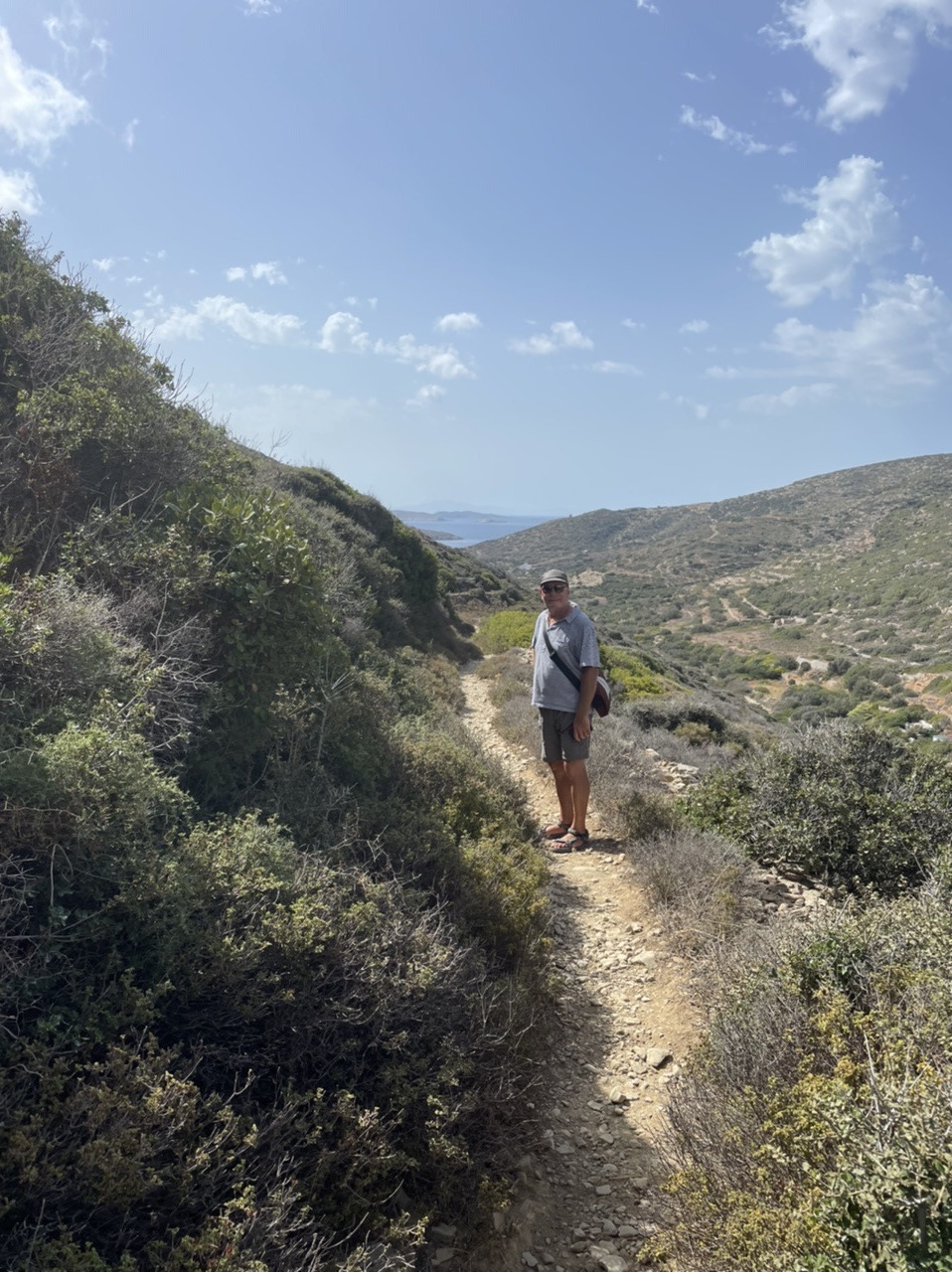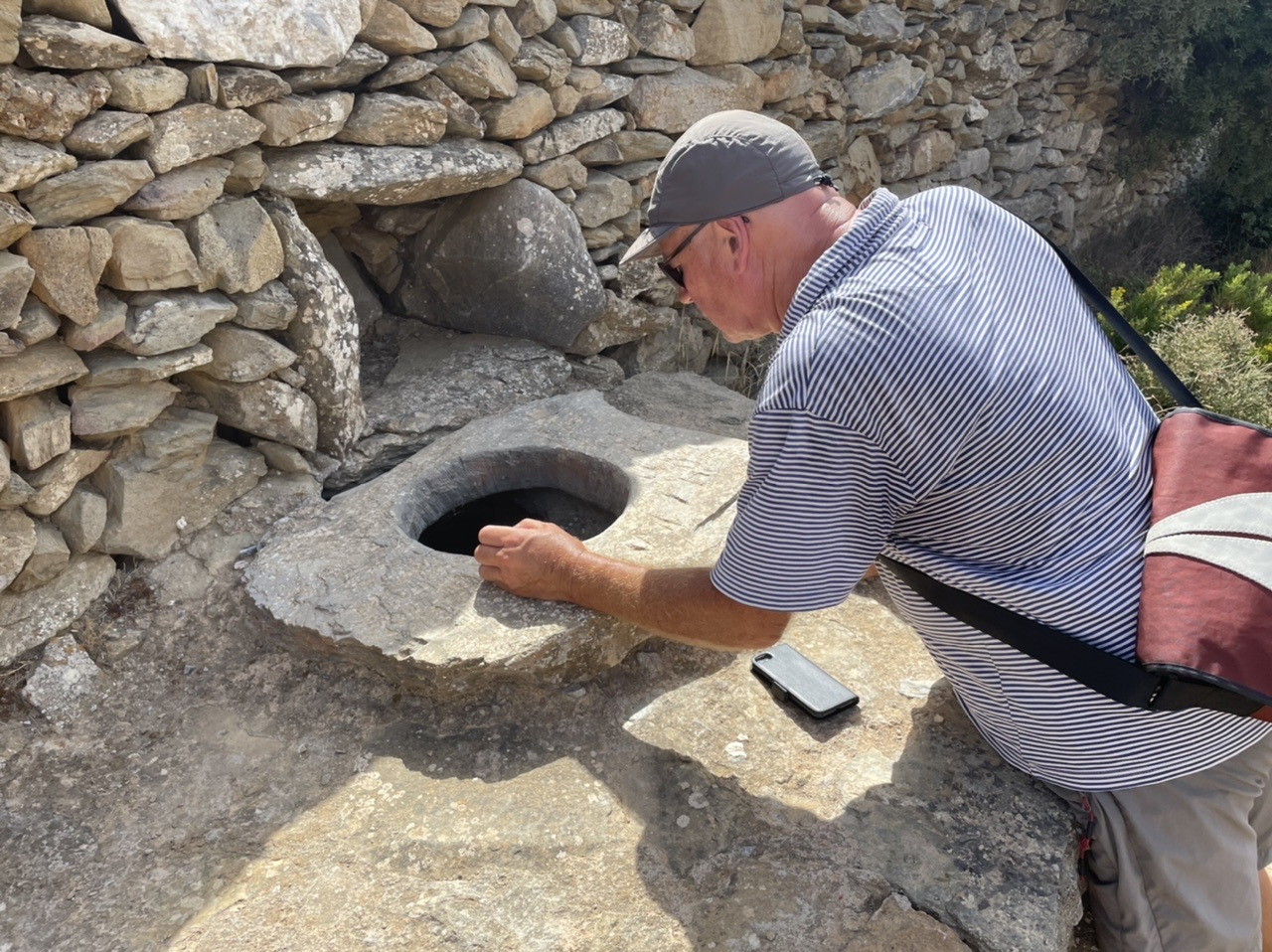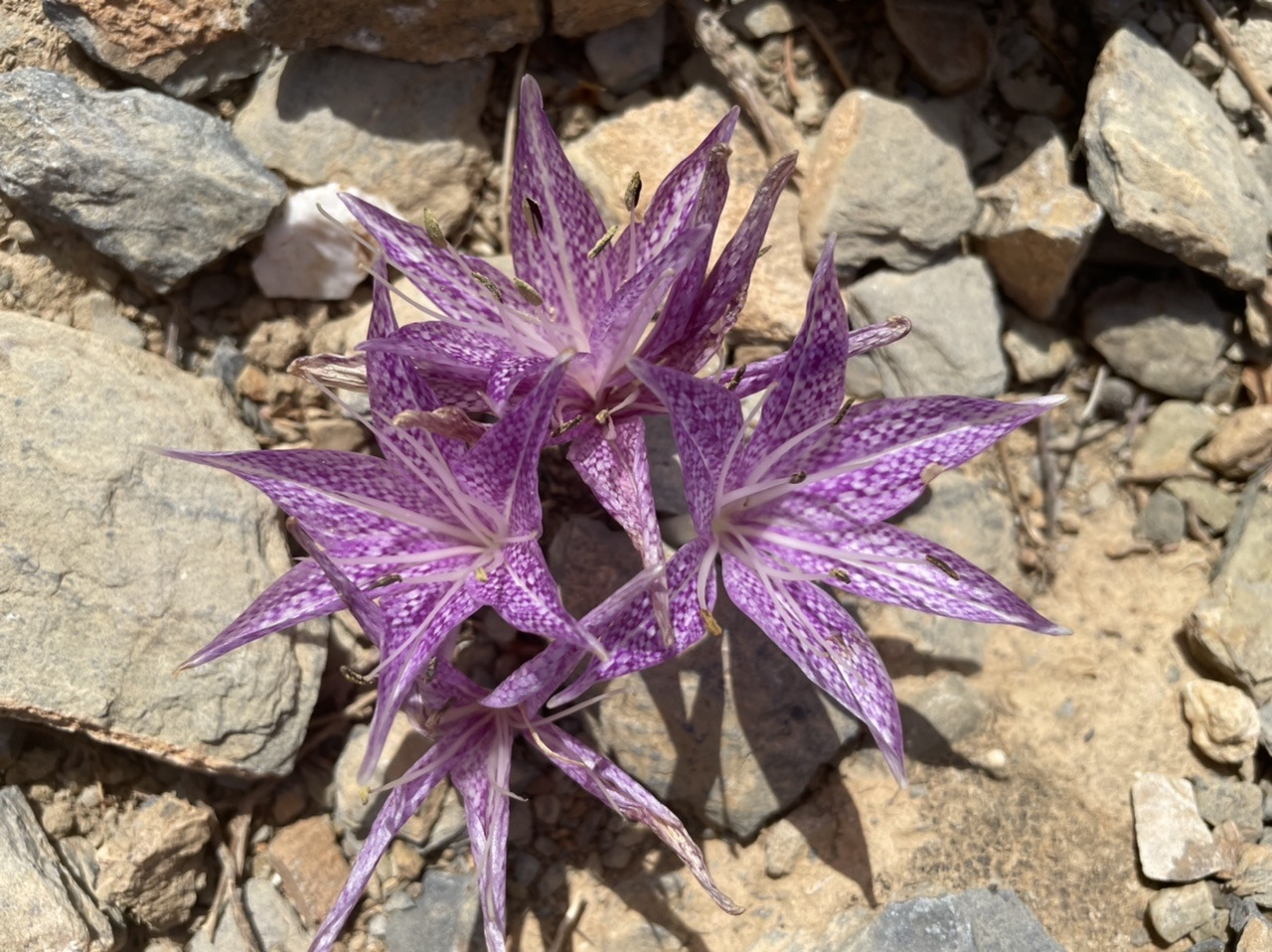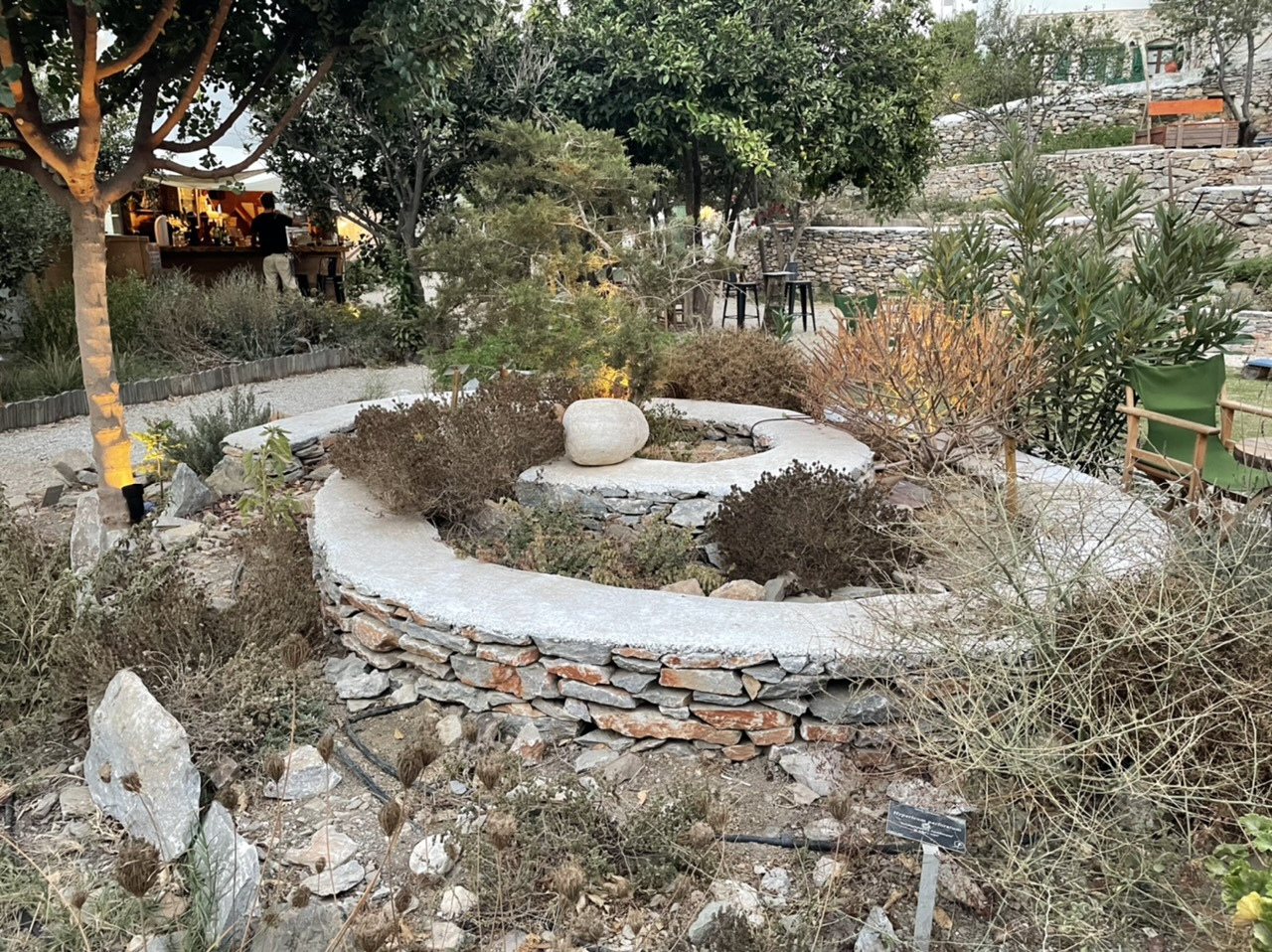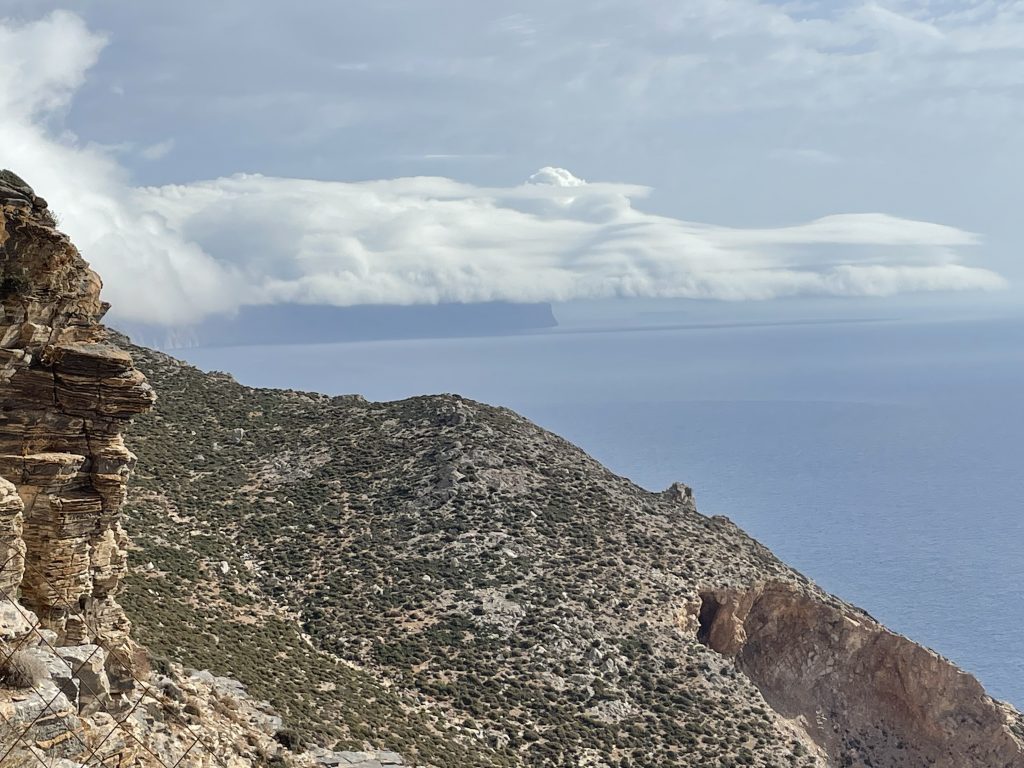
After 40 nautical miles with partly heavy swells (the right wind, after all) we found the anchorage our boat neighbour in Astypalea had recommended - well protected against swells, but not against wind, and there really was enough of that. A tiny bay in the northwest of Amorgós, quite shallow, and when we were around the jagged rocks, we saw: there are already six sailing boats here and some fishing boats. So we had to get very close to the exit of the bay, and that in 30 knots of wind from the front and pretty close to the rocks on both sides. It was blowing all night, but the anchor held well. And it was a very dark night: New moon, no artificial light and hardly any stars as the sky was mostly cloudy. Almost a bit eerie, but that's probably a matter of getting used to it.
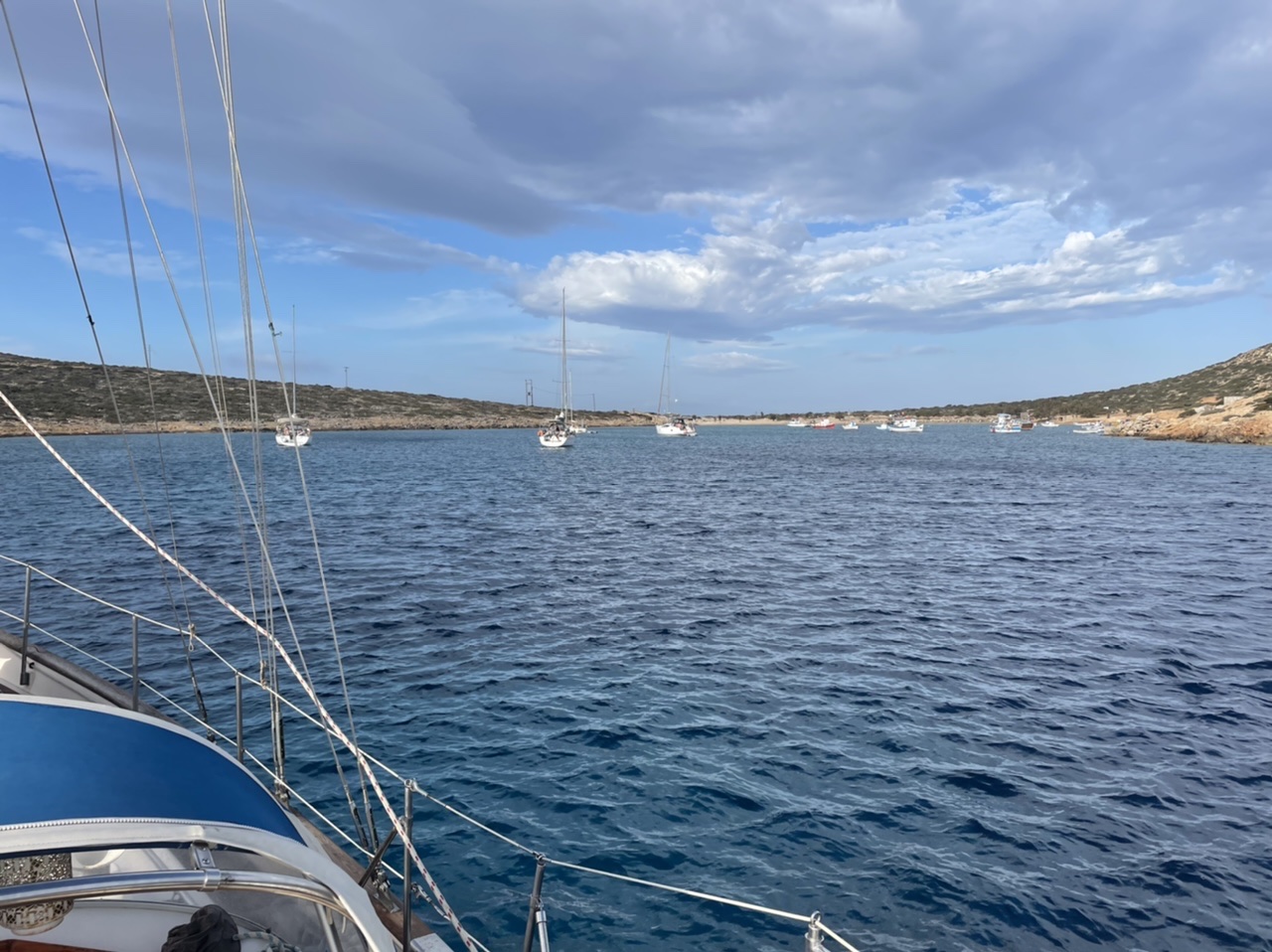
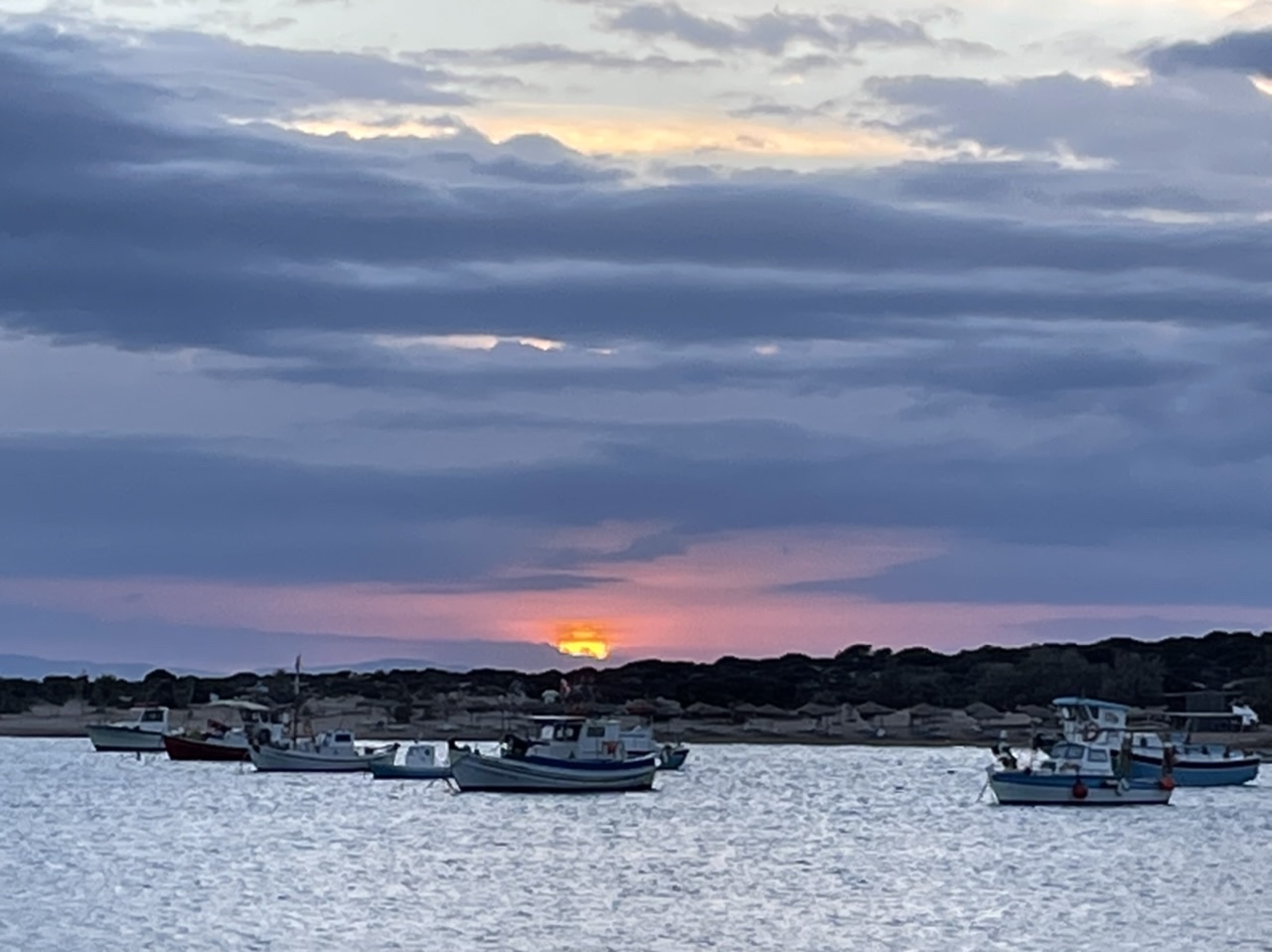
The next day we went on to Katapola, the main port of Amorgós. The town lies at the end of a wide hilly bay, with a tiny church on almost every hilltop. Behind the long pier, where the ferries also dock, a cosy little village with pubs, small supermarkets, bars and colourfully painted houses, mostly small hotels or studios, very pleasant.
A bus takes us to the Chora, a place well worth seeing, to the east side of the island, and it's quite something: vertical cliffs hundreds of metres high, reaching down into the sea, with a white monastery halfway up the vertical cliff, a few metres wide and three small storeys high. You have to climb up stairs and steep paths, there is no road. The entrance door is just 1.60m high, you crawl up almost steep stairs, stabilised by stone arches, into the church, full of icons and wood carvings. Up one flight of stairs, you take a seat in the monks' "good room" and are served honey ouzo liqueur (rakomelo), water and this delicious loukoumi. The view is indescribable, you are suspended, so to speak, in the rock face vertically above the sea. We ask if the monastery always looks so white and learn that once a year six people, lowered from the top floor with climbing harnesses and ropes, spend a week whitewashing the whole building.
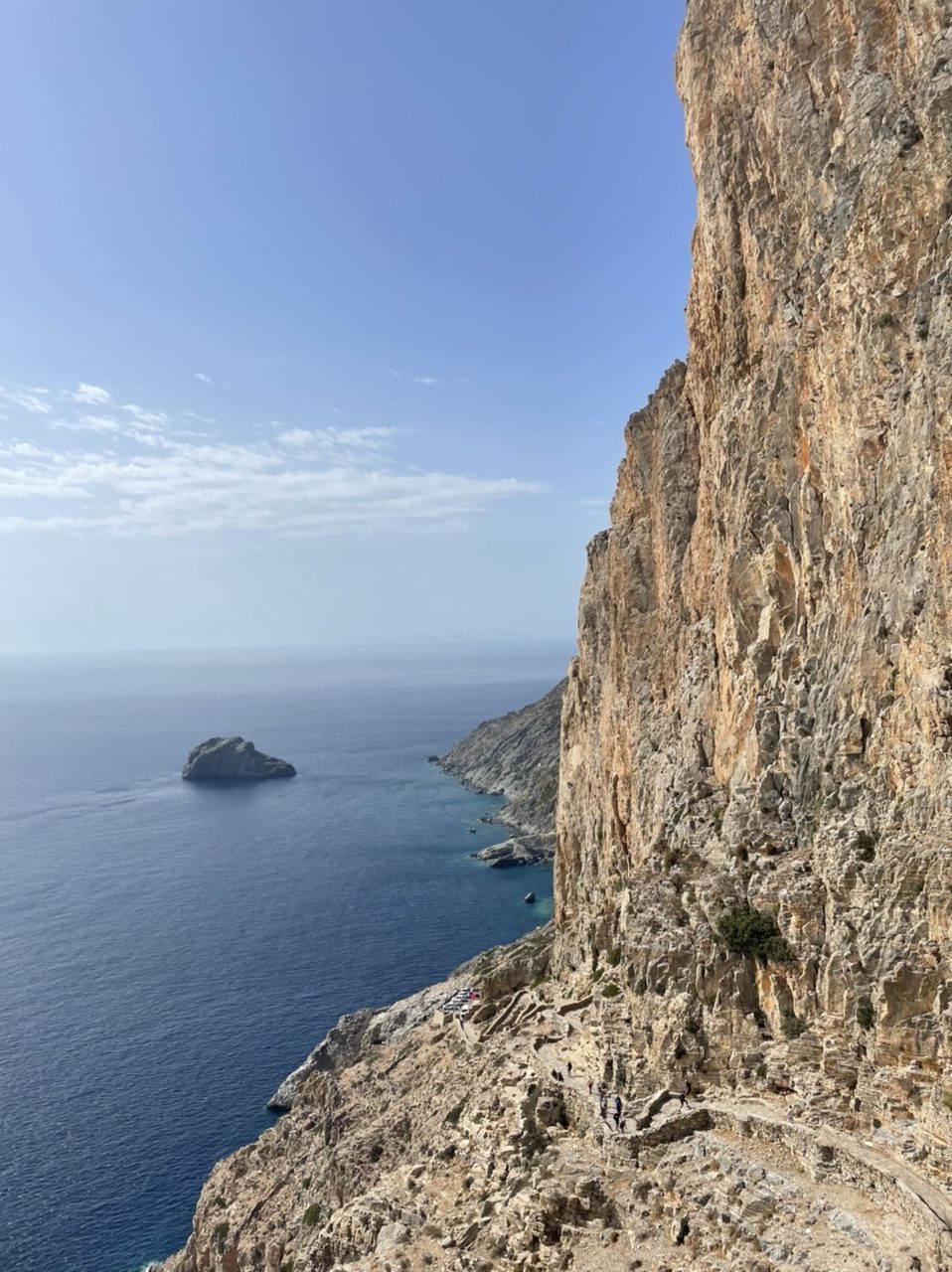
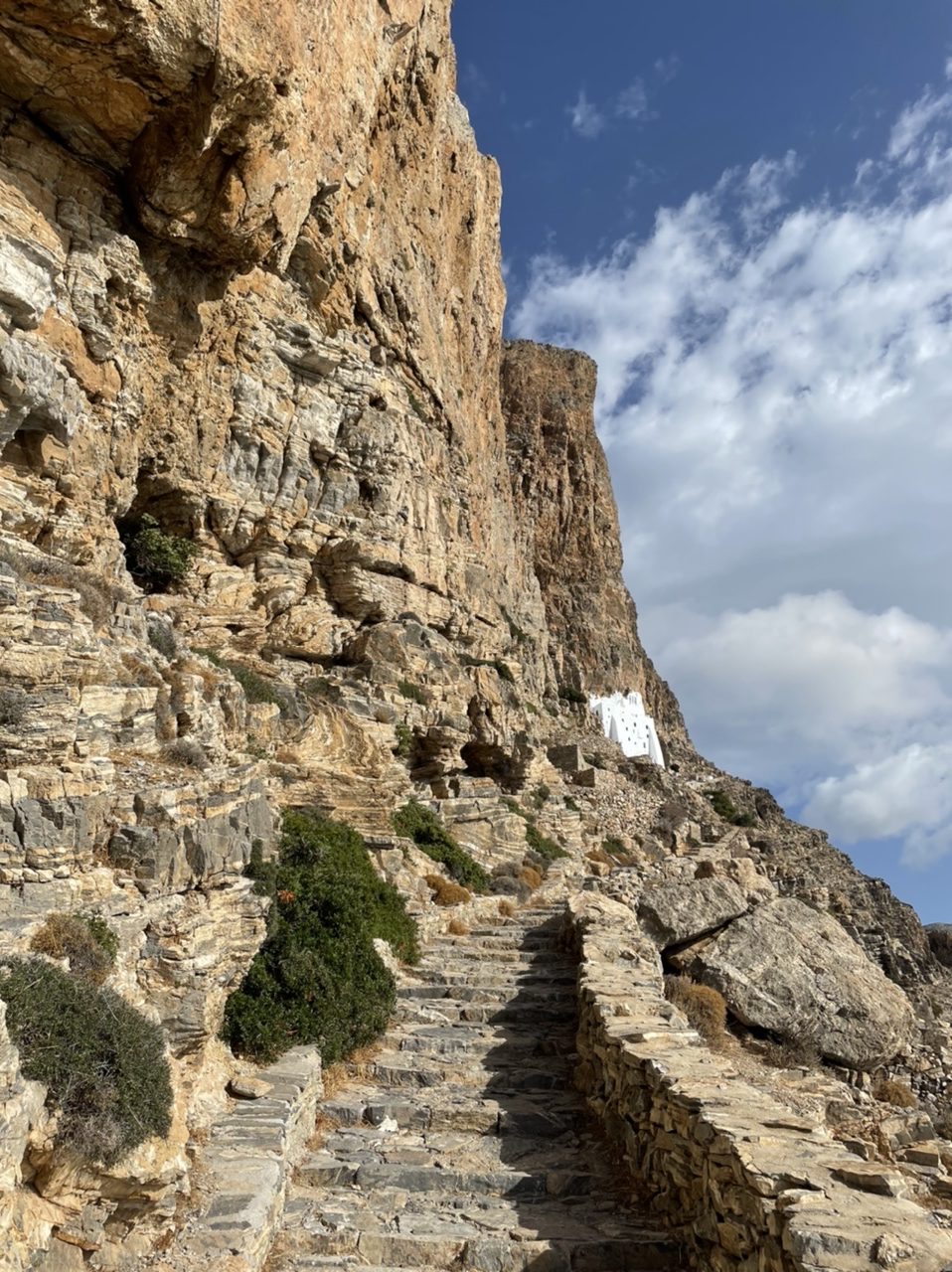
In Katapola there is something else very remarkable: a small botanical garden, directly behind the village. Mediterranean herbs and trees grow there, with explanatory signs. The garden is tended by young locals who also run the small taverna at the entrance and a herb shop. And: at the end of September, there was a jazz guitarist in the evening who played swing and bossa nova, and with great skill - the finest!
The island is touristy - but no mass tourism like in Kos, but rather individual tourists, with backpacks and hiking boots. The small Chora is also cosy, with tiny squares with bars under tamarisk trees.
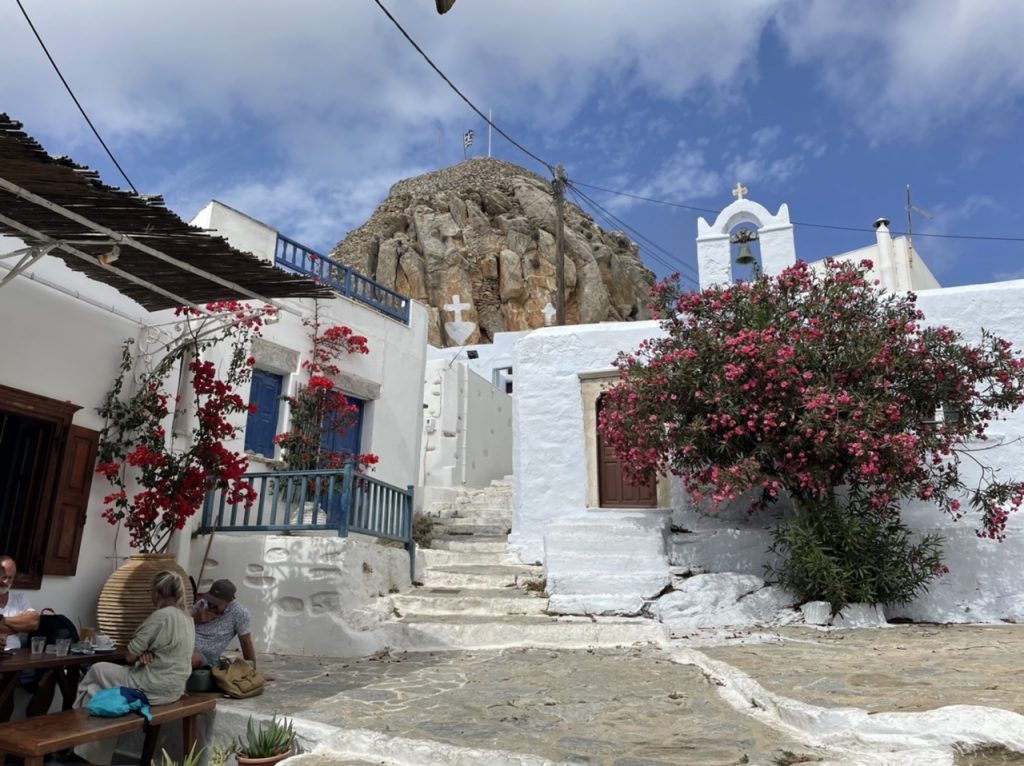
On the one-hour descent from the Chora to Katapola, we had magnificent views of the sea on well-marked paths along walls and terraces - an all-round beautiful island. Therefore we were able to cope with a slipping anchor, a change of mooring and an accidentally pulled neighbour's anchor chain …
